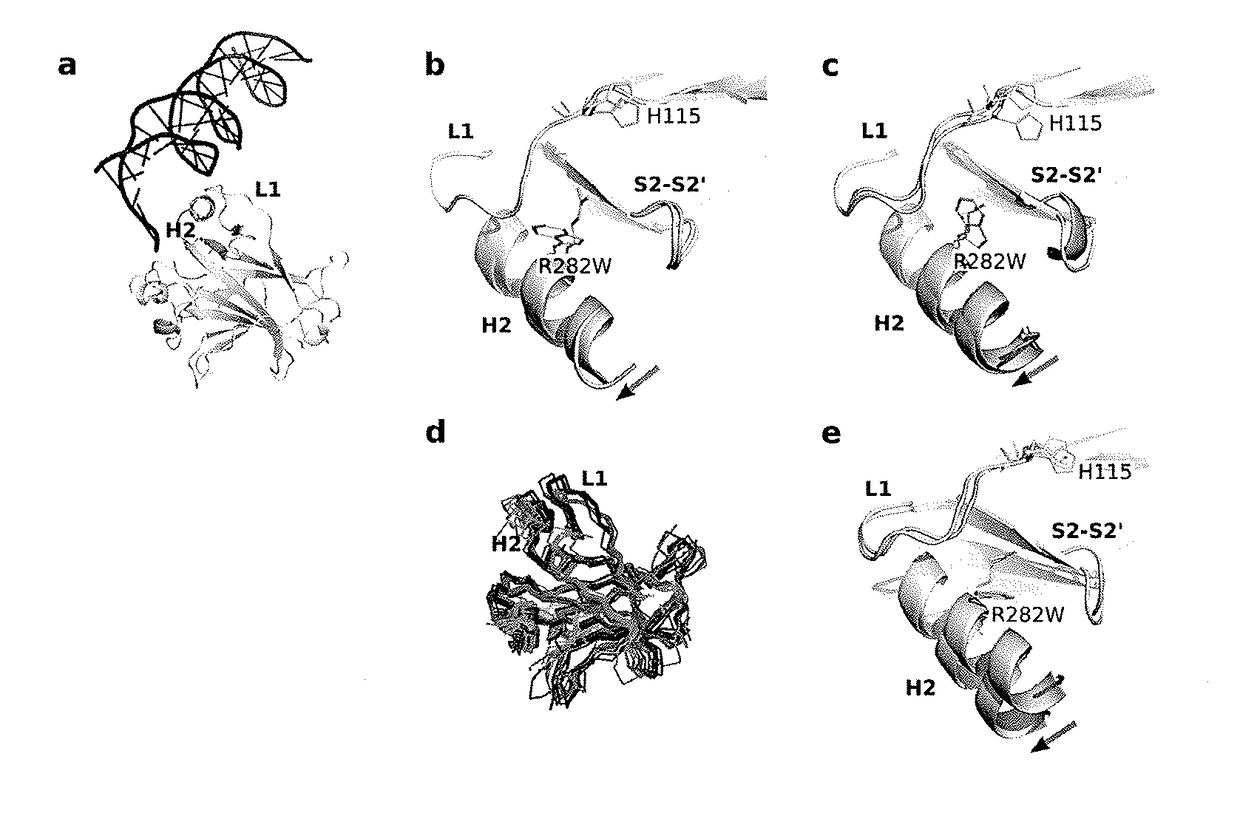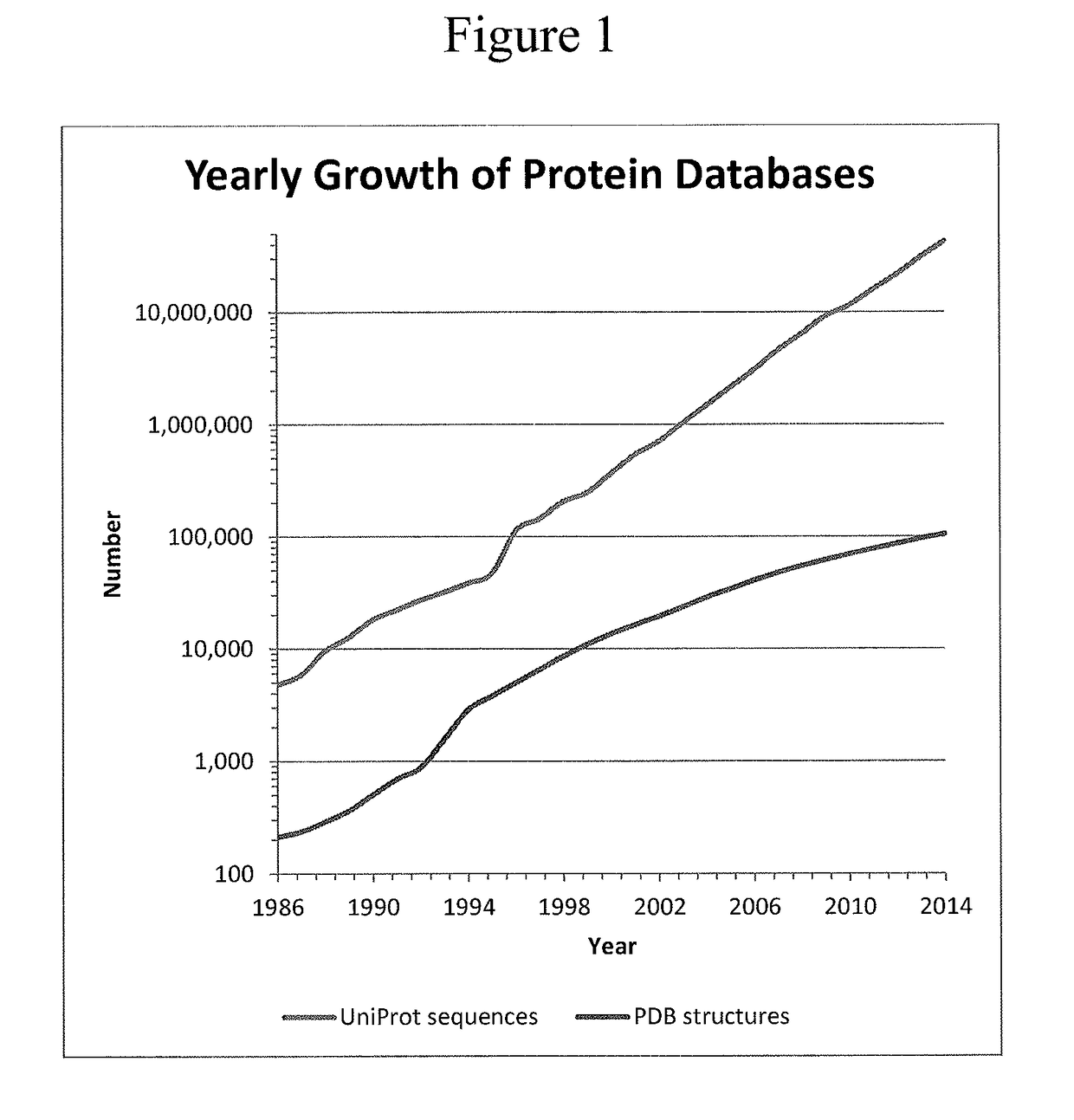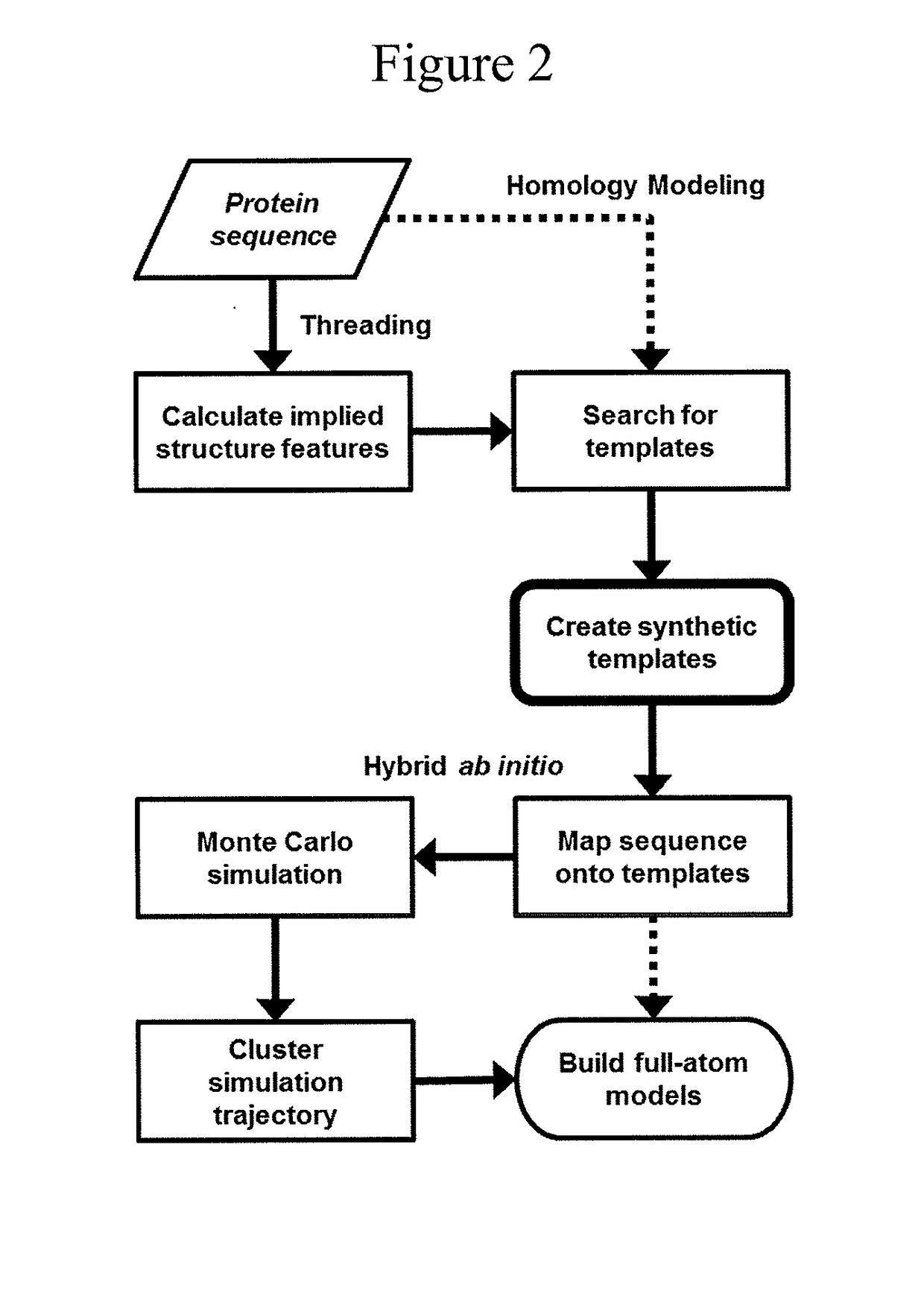Protein structure prediction system
a protein structure and prediction system technology, applied in the field of molecular biology, diagnostic science, pharmacology, can solve the problems of process application to templates whose conformations are not already energetically optimal, and achieve the effects of increasing the sampled structural diversity, high resolution model discovery rate, and low energy conformation
- Summary
- Abstract
- Description
- Claims
- Application Information
AI Technical Summary
Benefits of technology
Problems solved by technology
Method used
Image
Examples
embodiments
[0050]The following are among the embodiments of the invention.
[0051]A method for creating NMA-based perturbations for synthetic template construction is to perturb a protein structure along the principal vector defining a normal mode or along discrete linear combinations of modes. The method is straightforward to apply; however, its use does not scale well beyond pairwise combinations of normal modes. Also, since normal modes are conventionally linear vectors, implausible bond stretching and bending will occur as the deformation magnitude increases. Energetic minimization processes, like those present in hybrid ab initio structure prediction, are used to correct chemically-implausible deformations.
[0052]Biomacromolecular structures can be represented by either Cartesian coordinates or by an internal coordinate system describing bonds and bond angles within the atomic structure. A preferred method for creating NMA-based perturbations is to map normal modes from linear Cartesian vect...
example 1
Improved Secondary Structure Prediction of BT2437
[0115]The protein BT2437 from Bacteroides thetaiotaomicron VPI-5482 contains the domain DUF4136 at the core of the protein [53] (PDB ID: 4F54). The accelerated conformational sampling process correctly identified core secondary structural elements in the DUF4136 domain that the original process did not contain.
example 2
Improved Loop Modeling for PA3229
[0116]The protein PA3229 from Pseudomonas aeruginosa PAO1 contains the domain DUF2790 [54] (PDB ID: 4F98). The loops that connect the core secondary structure features that define the domain can alter the entire structure. The protein model of PA3229 determined by the accelerated conformational sampling process predicted loops that more closely align with the experimentally determined structure than the model predicted using the original process (FIG. 10).
PUM
 Login to View More
Login to View More Abstract
Description
Claims
Application Information
 Login to View More
Login to View More - R&D
- Intellectual Property
- Life Sciences
- Materials
- Tech Scout
- Unparalleled Data Quality
- Higher Quality Content
- 60% Fewer Hallucinations
Browse by: Latest US Patents, China's latest patents, Technical Efficacy Thesaurus, Application Domain, Technology Topic, Popular Technical Reports.
© 2025 PatSnap. All rights reserved.Legal|Privacy policy|Modern Slavery Act Transparency Statement|Sitemap|About US| Contact US: help@patsnap.com



